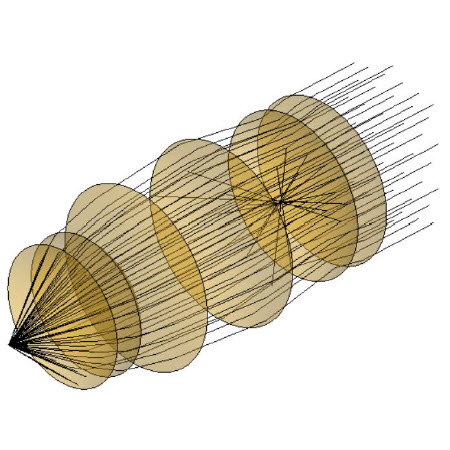In optical design, it is important to take undesired effects into consideration properly. For example, ghost images due to e.g. reflections from uncoated surfaces may take place in every optical setup, and the influence on the system performance should be examined. With the recently released non-sequential extension, VirtualLab can be used to analyze effects like the aforementioned ghost images conveniently. Via the flexible configuration of the channels for the individual surfaces, as well as of other numerical parameters, the simulation of the system in hand can be adjusted for the analysis of various situations, and to varying degrees of accuracy.

Investigation of Ghost-Image Effects in Collimation Systems
In any optical system there is always stray light which causes ghost images. Stray light may have different origins, such as undesired reflections and scattering. A collimation lens system for high-NA laser diodes is taken as an example. Reflections between uncoated surfaces are studied with the non-sequential tracing technique in VirtualLab, which that the multiple reflections may cause interference fringes in the collimated beam.
Non-Sequential Configuration: How to Use Simulation Settings for Ray and Field Tracing
VirtualLab can be used to perform ray as well as field tracing. The control of numerical simulations is typically handled through the specification of various parameters. In VirtualLab these often come in the form of accuracy factors. This document explains the usage of the provided accuracy factors to control the ray and field tracing engine within VirtualLab with the focus on the setting of non-sequential simulation.
|

